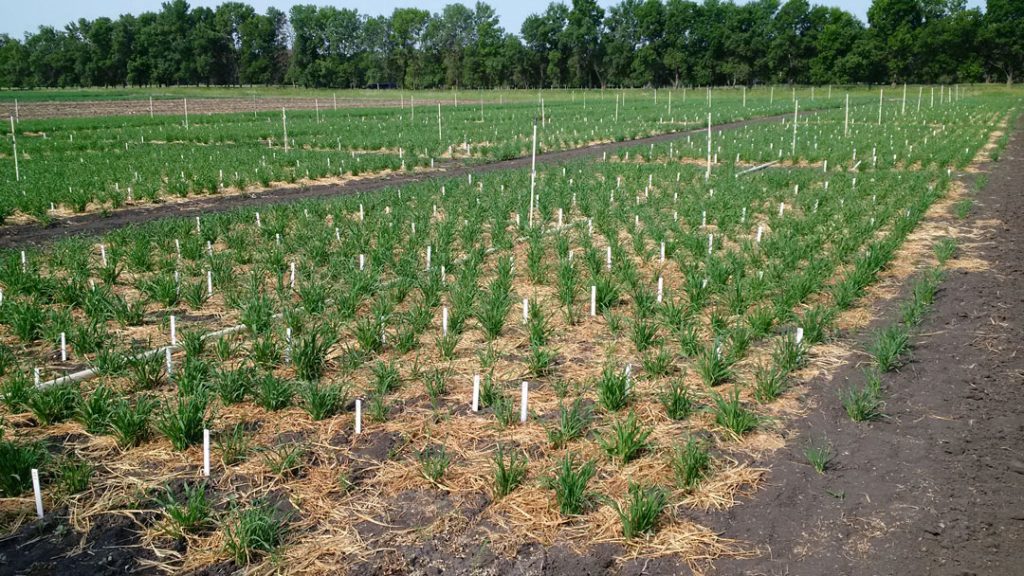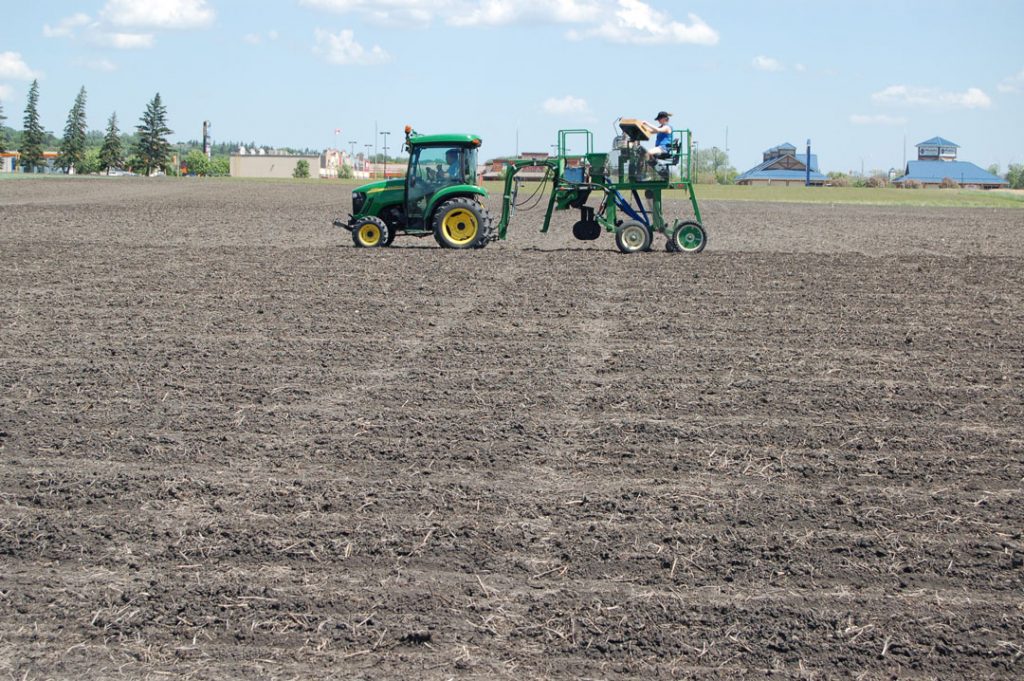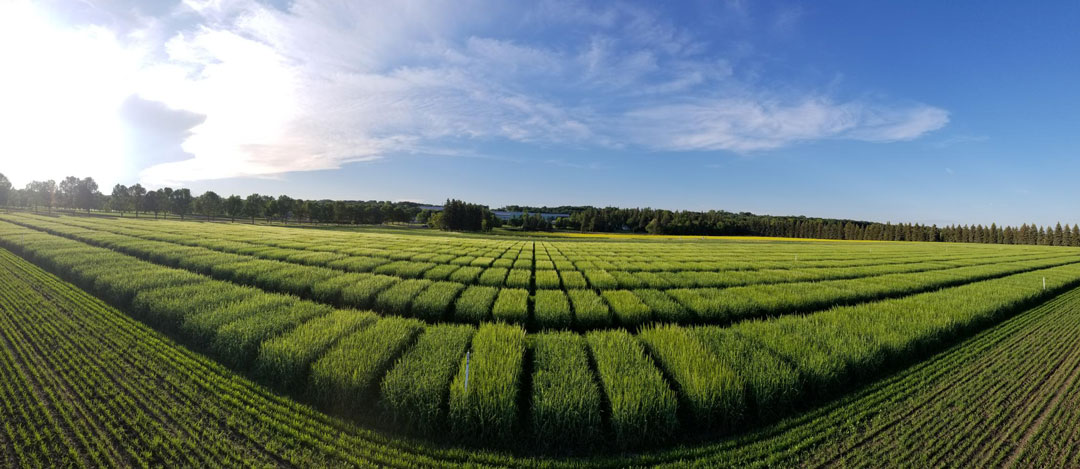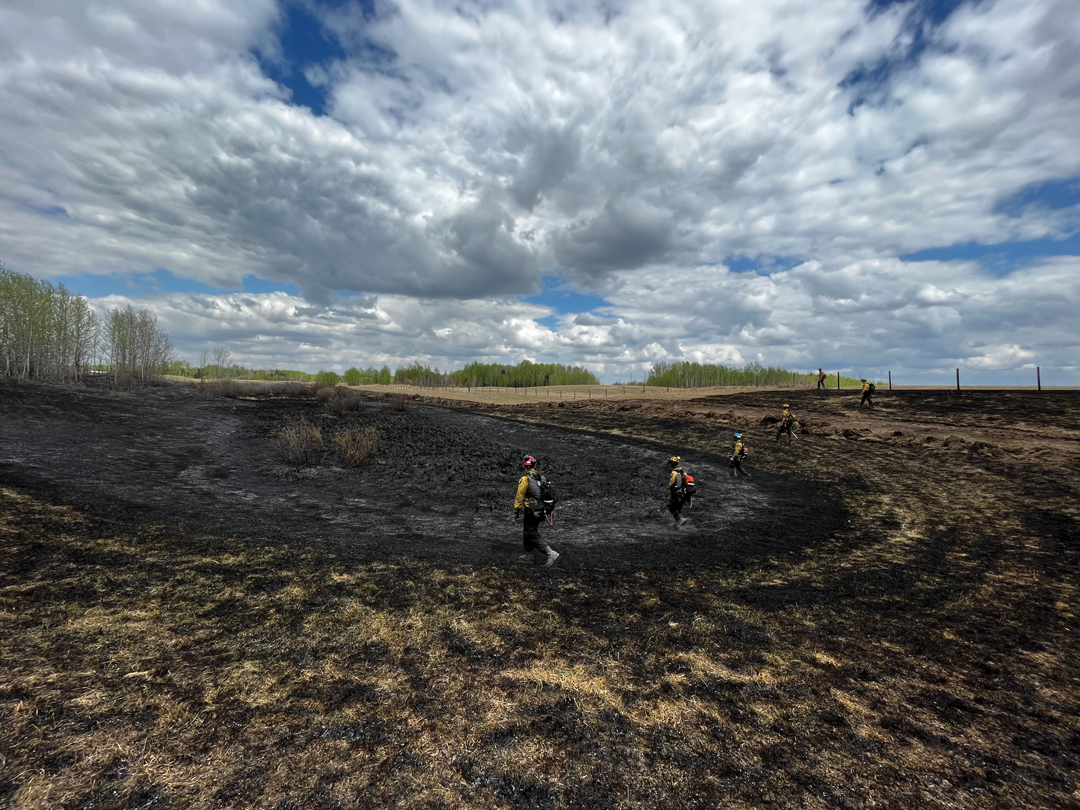STRENGTH IN NUMBERS
BY GEOFF GEDDES • PHOTOS COURTESY OF AAFC BRANDON RESEARCH AND DEVELOPMENT CENTRE
There is strength in numbers. It’s a truism that has motivated cereals commissions across the Prairies to team up and strengthen their research efforts.

WHEAT
Formed in 2017, the Canadian Wheat Research Coalition (CWRC) is comprised of the Alberta Wheat Commission (AWC), the Saskatchewan Wheat Development Commission and the Manitoba Crop Alliance.
The five-year Prairie checkoff, which was known as the Western Canadian Deduction, was launched in 2012. A portion of the fund went to the Western Grains Research Foundation (WGRF), which used some of the money to support core breeding agreements with all public variety development institutions. When the program ended in 2017, the three Prairie commissions agreed to work together to increase their own checkoff amounts to ensure vital research continued.
“The scientific research that we invest in is all about what’s best for our farmer members, and the greatest value of the CWRC comes in collaboration,” said Lauren Comin, CWRC president and Alberta Wheat and Barley Commissions director of research. “Prior to its formation, there was criticism from industry that research was not a collaborative effort and resulted in a lot of overlap between provinces. One of the biggest benefits to the initiative is creating a venue for everyone to get together, look at research proposals and see if a project in Alberta might also benefit Manitoba, for example. If it would, let’s work with our partners to expand and extend the reach of the project beyond provincial borders.” This approach may also eliminate duplicate research projects being carried out among the provinces.
Central to the operation of the CWRC are core breeding agreements, which were established by the WGRF to maintain staffing and operational capacity within public breeding institutions. Each of these, such as the Agriculture and Agri-Food Canada (AAFC) Lethbridge Research and Development Centre, receives funding in line with the size and requirements of its research program.
“We have specific objectives for each breeding activity, such as improving yield and end-use quality for Canada Prairie Spring wheat,” said Harpinder Randhawa, AAFC wheat breeder. “The core breeding agreement provides support for key human resources involved in developing new varieties. Once we register a cultivar, it will be licensed to a seed distribution company and distributed to farmers.”
Ultimately, the agreements lead to the creation of field-ready varieties, with genetic gains in areas such as yield and disease resistance that provide clear advantages to farmers.

BARLEY
“We first started the conversation around the Canadian Barley Research Coalition (CBRC) in 2018, when Alberta initiated its Getting to Growth strategy,” said Jill McDonald, executive director of SaskBarley Development Commission and president of the CBRC. “The three Prairie provinces began talking about the value chain and working together more to achieve the research targets in the strategy while leveraging the limited resources we have in the barley industry.”
That talk spawned the Canadian Barley Roundtable that identified research gaps for barley, and triggered the formation of the CBRC, which is comprised of Alberta Barley, SaskBarley Development Commission and the Manitoba Crop Alliance.
“We are very much in the development and growth phase right now, with the goal of inviting any organization interested in funding barley research to join the coalition,” said McDonald.
As with the CWRC, core breeding agreements are a key part of CBRC programming. “Since 1995, producers have continuously invested in barley variety development by the barley breeding program at the AAFC Brandon Research and Development Centre through the Western Grains Research Foundation (WGRF),” said Ana Badea, AAFC research scientist in barley breeding and genetics.
Over the years, the main goal of the barley core breeding agreements was to develop new barley varieties suited to western Canadian barley growing regions. This goal continues under the recently signed barley core breeding agreement between the CBRC and AAFC.
“This funding provides stability to our program for maintaining long-term, highly qualified technical staff working on various barley breeding activities in the field, disease nurseries, greenhouses and the genomics lab at our centre,” said Badea.
The agreement will help the AAFC Brandon barley breeding program capitalize on innovative research opportunities and ensure Canadian barley farmers have access to new and improved varieties in the next five years.
“Enhanced barley cultivars, especially malting barley, will ensure that producers and industry remain relevant in world market competition,” said Badea.
While there are some differences between the CWRC and CBRC, they share a common mission. “Barley has less funds to work with than wheat, so it has to be more creative and directive in its efforts,” said Comin. “Since we have some common members at both tables, though, we can often collaborate and communicate opportunities to each other when they arise.”
This ability to collaborate makes the coalitions particularly valuable to the industry. “We are very excited about the ability to operate in the space these coalitions provide,” said Comin. “Having a unified position is valuable, so if we can use these organizations to work out some of our issues and speak with one voice, it gives farmers far more power and influence over where we go from here.”







Comments